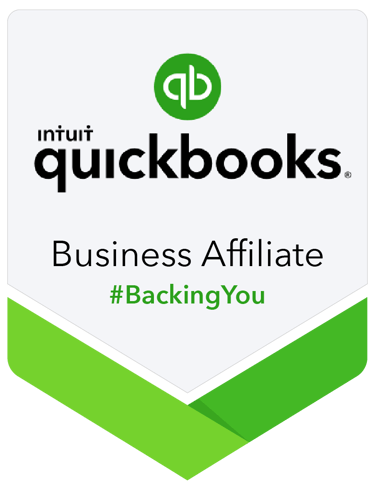How to Set Up Small Business Bookkeeping System | Simple Guide for Beginners
Learn to set up an effective small business bookkeeping system with this step-by-step guide. Includes chart of accounts, transaction categorization, and tax basics for entrepreneurs.
BOOKKEEPING
Jerry Blanco
6/6/20254 min read


Let's be honest—when you started your business, you probably didn't dream about spreadsheets and receipts. You had visions of serving customers, creating amazing products, or finally being your own boss. But here's the thing: good bookkeeping is what turns those dreams into sustainable profits.
If the thought of setting up a bookkeeping system makes you want to hide under your desk, take a deep breath. I'm going to walk you through creating a simple, effective system that won't require an accounting degree or steal all your time. Think of this as your "bookkeeping for humans" guide.
Why Your Business Needs a Proper Bookkeeping System (Beyond Just Avoiding the IRS)
Before we dive into the how-to, let's talk about why this matters. A solid small business bookkeeping system isn't just about tax time—though it certainly makes that less painful. It's your business's GPS, showing you:
Where your money is actually going (spoiler: it's probably not where you think)
Which services or products are your real money-makers
When cash flow problems are heading your way
Whether you can afford that new equipment or hire
Step 1: Choose Your Bookkeeping Method (Keep It Simple, Keep It Consistent)
For most small businesses, you have two main options:
Cash Basis Accounting: You record income when money hits your bank account and expenses when you actually pay them. This is like tracking your personal checking account—straightforward and perfect for most sole proprietors and small businesses.
Accrual Basis Accounting: You record transactions when they happen, even if money hasn't changed hands yet. If you send an invoice, you record the income immediately, even if the client pays 30 days later.
My recommendation for most small businesses: Start with cash basis. It's simpler, and unless you're carrying inventory or have complex payment terms, it'll serve you well.
Step 2: Build Your Chart of Accounts (Think Filing Cabinet, Not Rocket Science)
Your chart of accounts is like a filing cabinet for your money. Every transaction gets sorted into one of these "folders." Here's a simple structure that works for most small businesses:
Income Accounts
Sales/Revenue: Your main business income
Other Income: Interest, refunds, or side revenue streams
Expense Accounts
Cost of Goods Sold (COGS): Direct costs to deliver your product/service
Office Expenses: Supplies, software subscriptions, phone bills
Marketing/Advertising: Website costs, business cards, paid ads
Professional Services: Legal, accounting, consulting fees
Travel/Transportation: Business mileage, flights, hotels
Utilities: If you have a business location
Insurance: Business insurance premiums
Equipment: Computers, tools, machinery
Asset Accounts
Checking Account: Your business bank account
Equipment: Computers, furniture, tools (things that last more than a year)
Liability Accounts
Credit Cards: Business credit card balances
Loans: Any business loans or lines of credit
Pro Tip: Don't go overboard with categories. If you're spending less than $500 a year on something, it probably doesn't need its own account.
Step 3: Choose Your Tools (Software That Won't Drive You Crazy)
You need bookkeeping software—Excel spreadsheets are not your friend here. Popular options for small businesses include:
QuickBooks Online: The gold standard, integrates with almost everything
FreshBooks: Great for service-based businesses and freelancers
Wave: Free option that covers the basics well
Xero: Clean interface, good for growing businesses
What to look for:
Bank account integration (automatically downloads transactions)
Invoice creation and tracking
Expense categorization
Basic reporting
Mobile app for on-the-go expense tracking
Step 4: Set Up Your Transaction Categorization System
This is where the magic happens—and where most people get overwhelmed. Here's my simple approach:
The 80/20 Rule of Categorizing
Focus on getting the big stuff right. Don't spend 10 minutes deciding whether that $3 coffee was "meals" or "office supplies." Create these categories and stick to them:
For Service-Based Businesses:
Professional development/education
Marketing and networking
Office and technology
Professional services
Travel and transportation
For Product-Based Businesses:
Inventory/materials
Shipping and fulfillment
Marketing and advertising
Equipment and tools
Professional services
The Weekly 15-Minute Rule
Spend 15 minutes every week categorizing transactions. Set a timer, grab some coffee, and power through it. Consistency beats perfection every time.
Step 5: Master These Basic Accounting Principles
You don't need to become a CPA, but understanding these concepts will save you headaches:
The Matching Principle
Match expenses with the income they help generate. If you buy supplies in January for a project you complete in February, both the expense and income should be recorded in the same period when possible.
The Business vs. Personal Rule
Keep business and personal expenses completely separate. This means a separate business bank account and credit card. No exceptions, no "I'll sort it out later."
The Documentation Rule
If there's no receipt or record, it didn't happen in the eyes of the IRS. Every business expense needs backup documentation.
Essential Records to Keep (And How Long to Keep Them)
Keep Forever:
Tax returns and supporting documents
Major asset purchase records
Legal documents (contracts, articles of incorporation)
Keep for 7 Years:
Bank statements and canceled checks
Receipts for business expenses
Payroll records
Sales records
Keep for 3 Years:
Employment tax records
Accident reports
Safety records
Digital Organization Tip: Scan everything and organize by year and category. Cloud storage with backup ensures you'll never lose important documents.
Basic Tax Principles Every Small Business Owner Should Know
Quarterly Estimated Taxes
If you expect to owe $1,000 or more in taxes, you need to make quarterly payments. Mark these dates on your calendar:
Q1: April 15
Q2: June 15
Q3: September 15
Q4: January 15 (following year)
Deductible Business Expenses
Common deductions include:
Home office expenses (if you work from home)
Business meals (50% deductible)
Professional development and education
Business insurance premiums
Equipment and software
The Home Office Deduction
If you use part of your home exclusively for business, you can deduct home office expenses. You can use the simplified method ($5 per square foot up to 300 square feet) or calculate actual expenses.
Your Action Plan: Getting Started This Week
Week 1:
Open a business bank account if you don't have one
Choose and set up your bookkeeping software
Create your basic chart of accounts
Week 2:
Connect your bank account to your software
Categorize the last month's transactions
Set up a weekly 15-minute bookkeeping appointment with yourself
Week 3:
Create a simple filing system for receipts
Set up quarterly tax payment reminders
Review and clean up any uncategorized transactions
Red Flags: When to Get Professional Help
Call in the pros when you encounter:
Inventory tracking and cost of goods sold calculations
Employee payroll and taxes
Multiple business entities or partnerships
Audit notices or complex tax situations
Monthly revenue over $50,000
Remember, good bookkeeping isn't about perfection—it's about consistency and making informed business decisions. Start simple, stay consistent, and adjust as your business grows.


